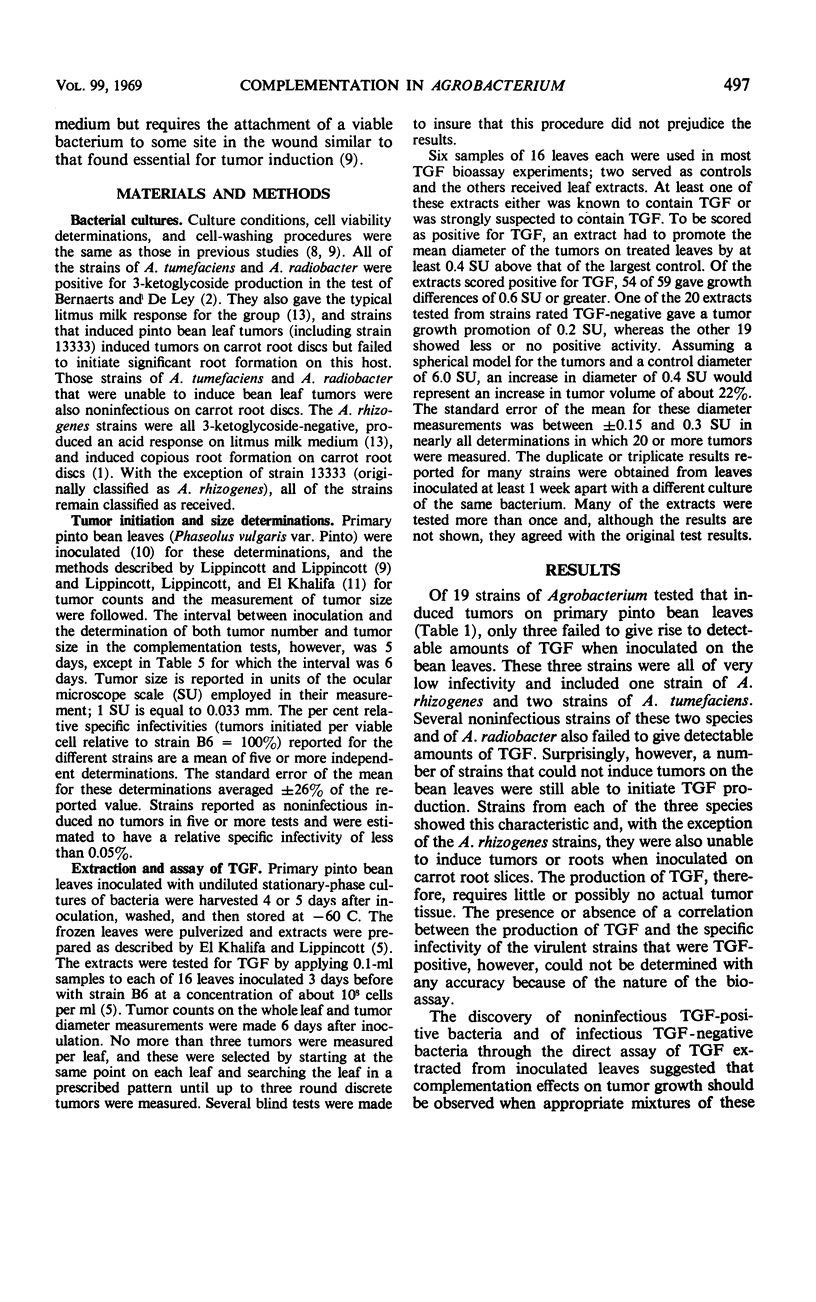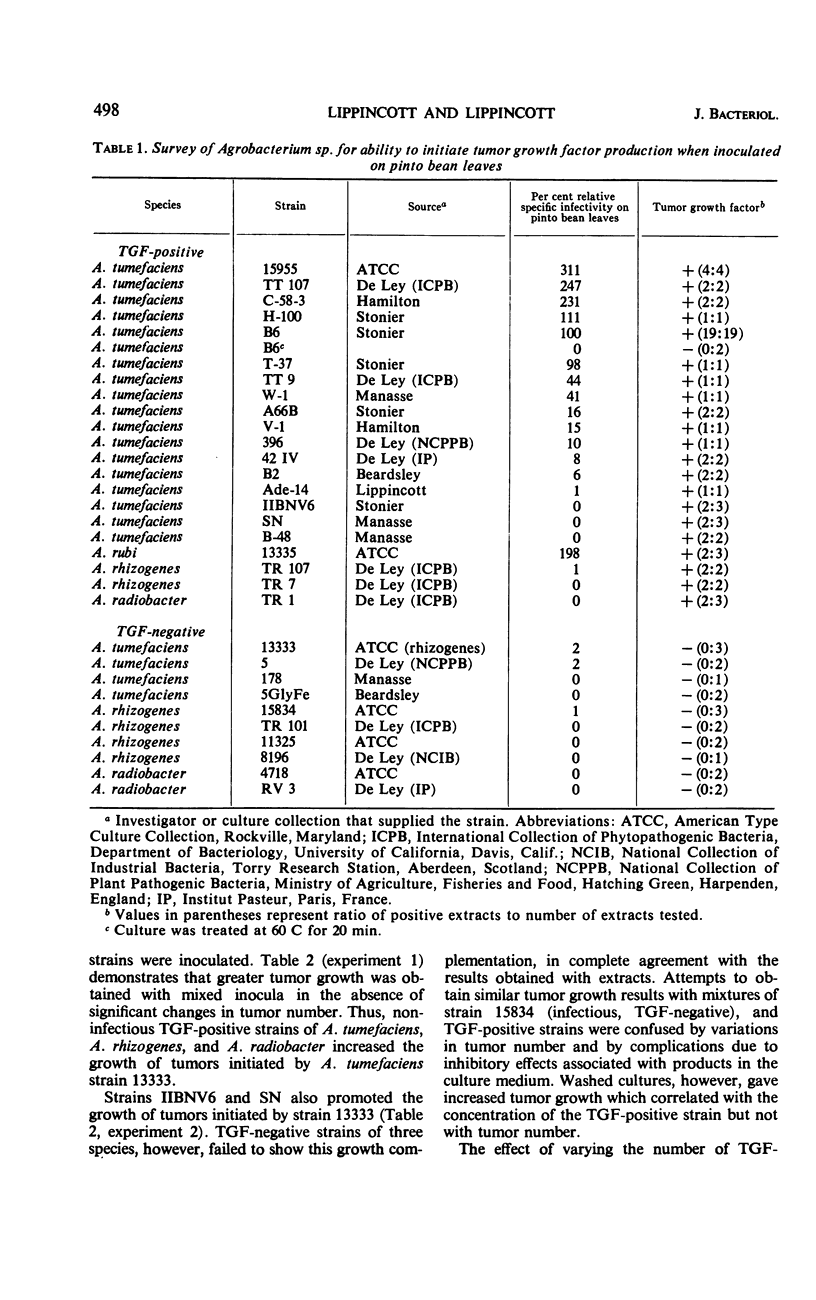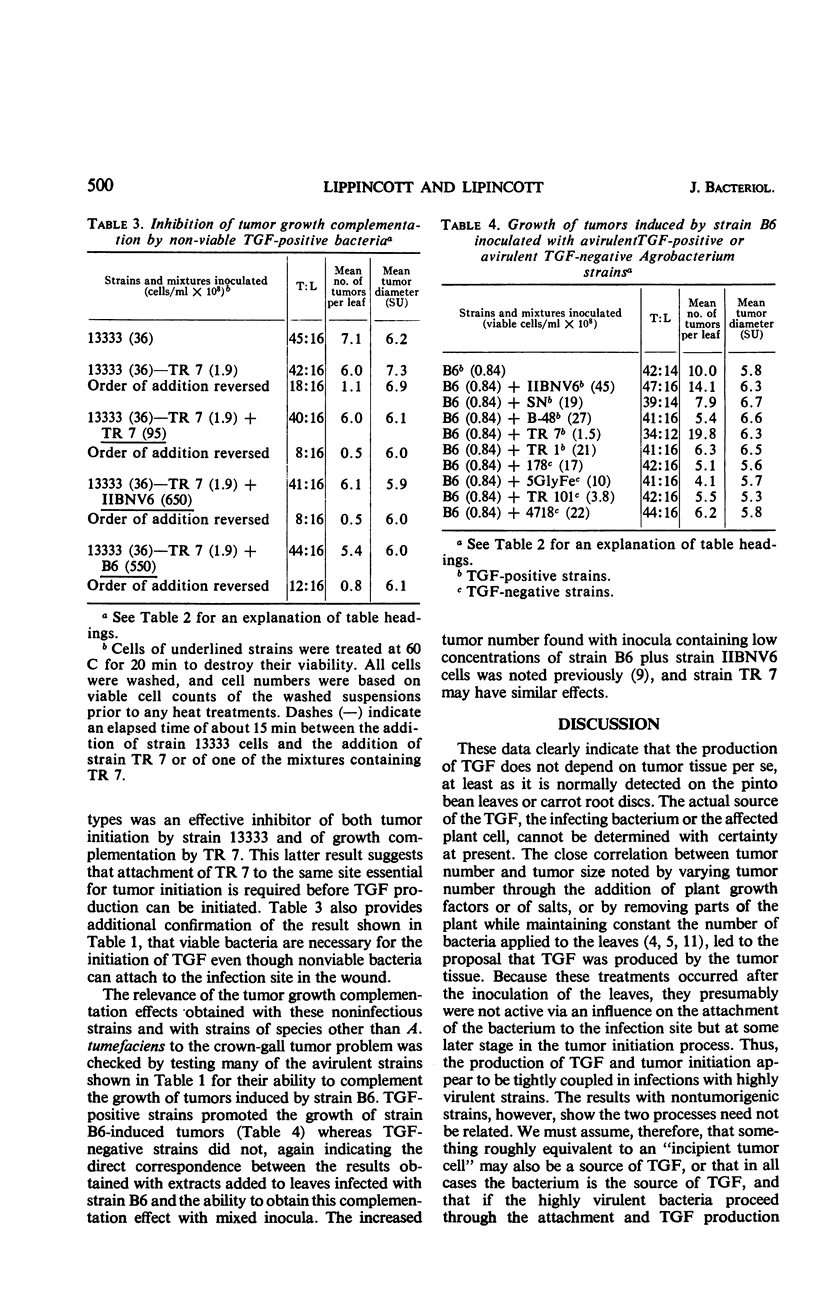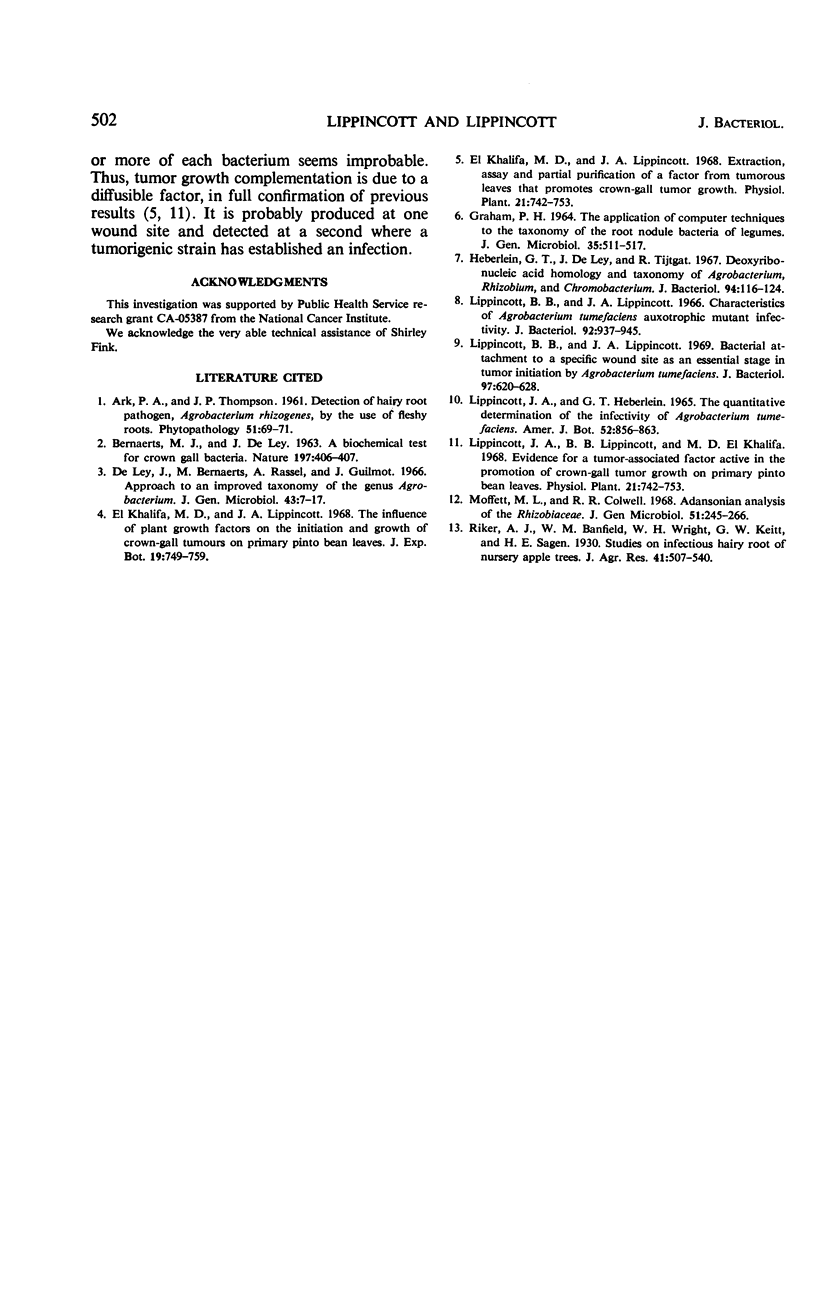Abstract
The ability of 31 strains of Agrobacterium to initiate the production of a tumor growth factor (TGF) which is associated with crown-gall tumors on primary pinto bean leaves was determined. Extracts from bean leaves inoculated with these bacteria were tested and they showed that 16 of the 19 strains that induced tumors on the leaves also initiated TGF production. The three strains for which no TGF was detected were of low infectivity and included two strains of A. tumefaciens and a strain of A. rhizogenes. Five of the 12 strains that did not induce pinto bean leaf tumors were found to initiate TGF production. Representatives of A. tumefaciens, A. rhizogenes, and A. radiobacter among these 12 strains were present in both categories. Mixed inocula composed of one of the three infectious TGF-negative strains and one of the five nontumorigenic TGF-positive strains resulted in increased growth of tumors induced by the former. These growth changes were not correlated with changes in tumor number. The ability of different strains to show these tumor growth complementation effects corresponded fully with their ability to initiate TGF, as determined by the assay of leaf extracts. The nontumorigenic TGF-positive strains also promoted the growth of tumors initiated by low concentrations of strain B6. These complementation effects were due, therefore, to the same TGF found in extracts of B6 inoculated leaves and of leaves inoculated with most tumorigenic as well as many nontumorigenic strains of Agrobacterium. Heat-inactivated cells of strain B6 failed to initiate sufficient TGF to be detected in extracts, and heat-inactivated cells of several strains failed to show tumor growth complementation, indicating bacterial viability to be one prerequisite for TGF initiation. Heat inactivated cells also inhibited TGF production by viable cells, similar to their ability to inhibit tumor initiation. Consequently, bacteria capable of attaching to the A. tumefaciens infection site may initiate one of four patterns of events: (i) TGF production only, (ii) tumor induction only, (iii) both, or (iv) neither. Suggestive evidence for a second tumor-associated growth factor is presented.
Full text
PDF






Selected References
These references are in PubMed. This may not be the complete list of references from this article.
- De Ley J., Bernaerts M., Rassel A., Guilmot J. Approach to an improved taxonomy of the genus Agrobacterium. J Gen Microbiol. 1966 Apr;43(1):7–17. doi: 10.1099/00221287-43-1-7. [DOI] [PubMed] [Google Scholar]
- Heberlein G. T., De Ley J., Tijtgat R. Deoxyribonucleic acid homology and taxonomy of Agrobacterium, Rhizobium, and Chromobacterium. J Bacteriol. 1967 Jul;94(1):116–124. doi: 10.1128/jb.94.1.116-124.1967. [DOI] [PMC free article] [PubMed] [Google Scholar]
- Lippincott B. B., Lippincott J. A. Bacterial attachment to a specific wound site as an essential stage in tumor initiation by Agrobacterium tumefaciens. J Bacteriol. 1969 Feb;97(2):620–628. doi: 10.1128/jb.97.2.620-628.1969. [DOI] [PMC free article] [PubMed] [Google Scholar]
- Lippincott B. B., Lippincott J. A. Characteristics of Agrobacterium tumefaciens auxotrophic mutant infectivity. J Bacteriol. 1966 Oct;92(4):937–945. doi: 10.1128/jb.92.4.937-945.1966. [DOI] [PMC free article] [PubMed] [Google Scholar]
- Lippincott J. A., Heberlein G. T. The quantitative determination of the infectivity of Agrobacterium tumefaciens. Am J Bot. 1965 Sep;52(8):856–863. [PubMed] [Google Scholar]
- Moffett M. L., Colwell R. R. Adansonian analysis of the Rhizobiaceae. J Gen Microbiol. 1968 Apr;51(2):245–266. doi: 10.1099/00221287-51-2-245. [DOI] [PubMed] [Google Scholar]


